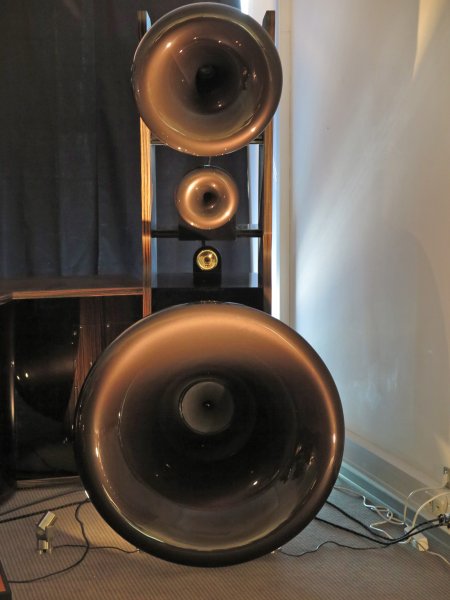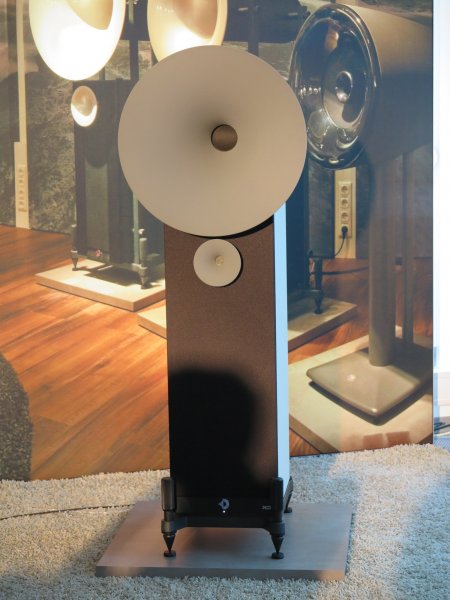While I auditioned the Avantgarde Trios with basshorns last year at the Avantgarde factory in Frankfurt, I did not come away with a general understanding of what horns do well and not so well, or why their devotees are so passionate about them (finding them, typically, to be more natural and musical than other speaker designs). Among the many benefits for me of going to Munich High End 2016 was the opportunity to explore additional horn speaker systems, most of which are manufactured in Europe.
At the Munich show I was able to survey a variety of horn systems at different price levels. I heard the Cessaro Gamma II F-8 (about €375,000), the Tune Audio Anima with Kion subwoofer, the Avantgarde Uno XD (€18,000), the Viva Audio Credenza (€79,000), the Martion Audio Einhorn, the Audio Tech Universum and the JMF Audio HPM500.
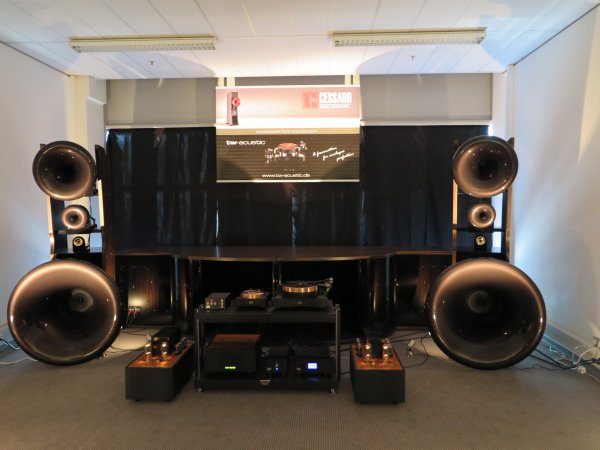
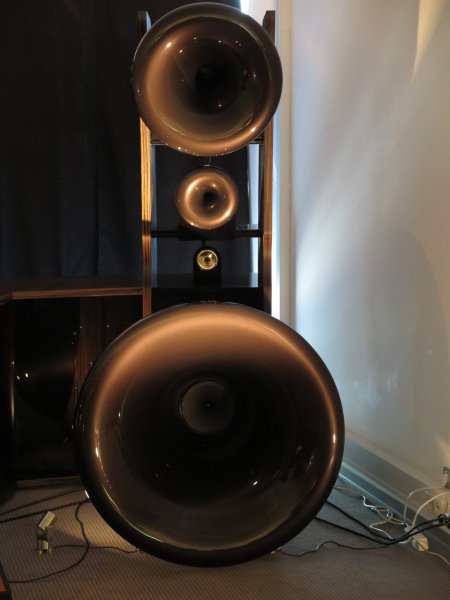
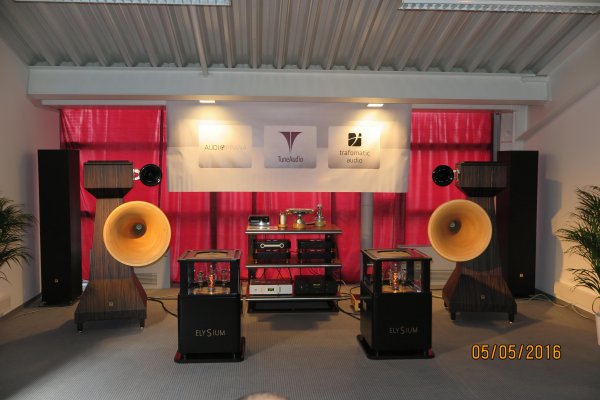
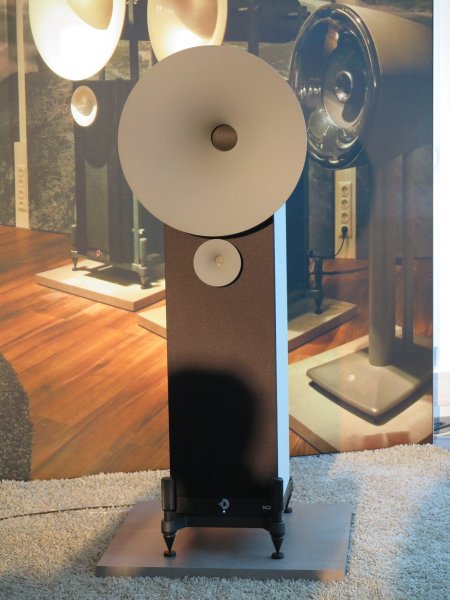
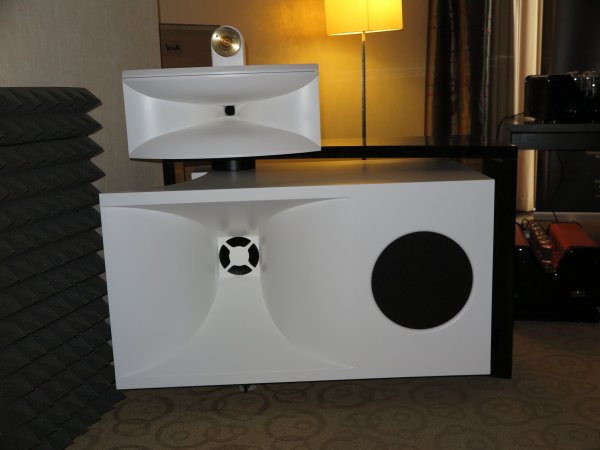
I have come to the tentative conclusion that, to my ears, horns, at their best, can reproduce jazz and classical music with greater instrumental body and weight, greater “jump factor,” and greater overall realism than any other speaker technology I have heard. There seems to be something about the way horns move air which allows a greater suspension of disbelief on instruments like saxophone, tuba, trumpet, etc. Those instruments sound more real and more “in-the-room being played by a live musician” than I have heard from any other type of speaker.
In Munich I experienced a never-to-be-forgotten revelation with the giant, 18 foot wide Cessaro system. Playing an LP of Scheherazade, among others, that system sounded more like a full, live symphony orchestra arrayed in front of me than I have ever experienced in my life. I heard, more realistically than I have ever heard before, the power and majesty of a symphony orchestra reproduced in front of me. Soaring volume, crashing drums, galloping rhythms -- all at fully realistic sound pressure levels.
The suspension of disbelief from classical music on the Cessaro was easier than I have ever experienced before on symphony orchestra music. It was absolutely thrilling and transfixing!
But I also came to the conclusion that for some reason -- which I understand has to do with horn coloration or horn “cuppiness” -- I do not hear horns reproducing vocals with the singer-in-the-room transparency to which I am accustomed from electrostatic panels, from ribbon-based speakers and from the best dynamic driver systems.
If I listened primarily to jazz music and classical music I would buy a Cessaro or a Viva Audio horn system and never look back. But because my primary musical interest is vocals with simple acoustic accompaniment my search for my last and ultimate speaker continues. . .
At the Munich show I was able to survey a variety of horn systems at different price levels. I heard the Cessaro Gamma II F-8 (about €375,000), the Tune Audio Anima with Kion subwoofer, the Avantgarde Uno XD (€18,000), the Viva Audio Credenza (€79,000), the Martion Audio Einhorn, the Audio Tech Universum and the JMF Audio HPM500.





I have come to the tentative conclusion that, to my ears, horns, at their best, can reproduce jazz and classical music with greater instrumental body and weight, greater “jump factor,” and greater overall realism than any other speaker technology I have heard. There seems to be something about the way horns move air which allows a greater suspension of disbelief on instruments like saxophone, tuba, trumpet, etc. Those instruments sound more real and more “in-the-room being played by a live musician” than I have heard from any other type of speaker.
In Munich I experienced a never-to-be-forgotten revelation with the giant, 18 foot wide Cessaro system. Playing an LP of Scheherazade, among others, that system sounded more like a full, live symphony orchestra arrayed in front of me than I have ever experienced in my life. I heard, more realistically than I have ever heard before, the power and majesty of a symphony orchestra reproduced in front of me. Soaring volume, crashing drums, galloping rhythms -- all at fully realistic sound pressure levels.
The suspension of disbelief from classical music on the Cessaro was easier than I have ever experienced before on symphony orchestra music. It was absolutely thrilling and transfixing!
But I also came to the conclusion that for some reason -- which I understand has to do with horn coloration or horn “cuppiness” -- I do not hear horns reproducing vocals with the singer-in-the-room transparency to which I am accustomed from electrostatic panels, from ribbon-based speakers and from the best dynamic driver systems.
If I listened primarily to jazz music and classical music I would buy a Cessaro or a Viva Audio horn system and never look back. But because my primary musical interest is vocals with simple acoustic accompaniment my search for my last and ultimate speaker continues. . .
Last edited:


